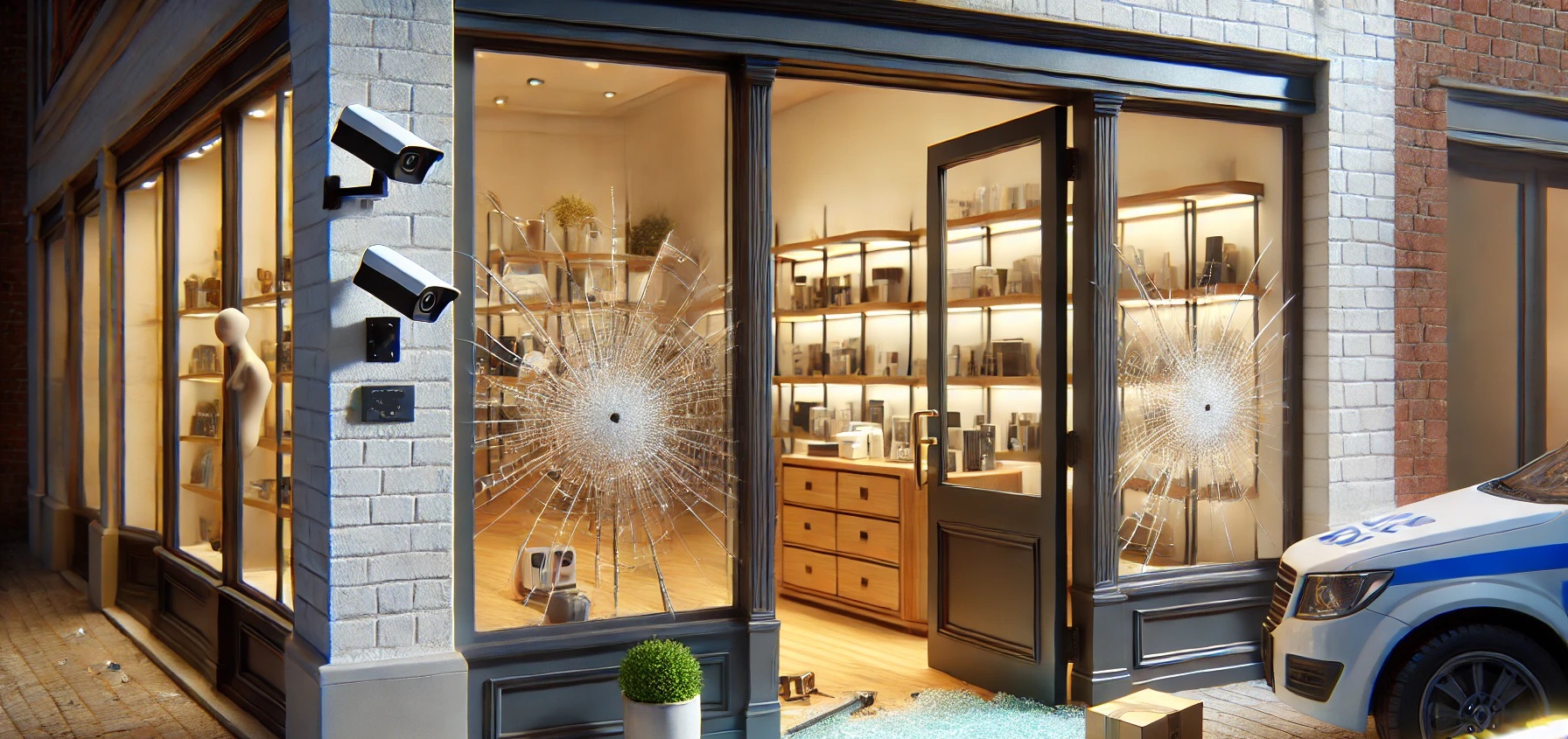Break-ins are one of the biggest threats to retail businesses, leading to financial losses and security risks for employees and customers. Implementing effective loss prevention strategies can minimize risks and ensure the protection of your establishment.
In this article, we will cover the best practices to prevent break-ins, including physical, technological, and operational measures to enhance retail security.
Main Risks of Break-Ins in Retail
Retailers face several vulnerabilities when it comes to break-ins, including:
- Lack of structural reinforcement in doors, windows, and storefronts.
- Absence of monitoring systems and effective alarms.
- Inadequate lighting, making criminal actions easier.
- Operational routine failures, such as improper closing procedures.
- Improper storage of cash and high-value merchandise.
Strategies to Prevent Break-Ins
1. Structural Reinforcement
Investing in the physical structure of the establishment reduces vulnerability to break-ins:
- Install reinforced doors and locks resistant to forced entry.
- Use bulletproof or laminated glass for storefronts and windows.
- Implement metal grilles or physical barriers to prevent unauthorized access.
2. Monitoring and Electronic Security
Technology plays a crucial role in break-in prevention:
- Security cameras positioned in key locations such as entrances, cash registers, and storage areas.
- Alarms and motion sensors to detect unauthorized access.
- Access control systems with electronic locks and biometric authentication for restricted areas.
- 24-hour remote monitoring, ensuring a quick response to incidents.
3. Lighting and Visibility
Keeping the environment well-lit reduces the likelihood of criminal actions:
- Install spotlights and motion sensor lighting for exterior areas.
- Avoid visual obstructions that could serve as hiding spots for intruders.
- Use transparent glass storefronts to maintain visibility inside the store.
4. Operational Security Procedures
Creating internal protocols helps maintain store security:
- Establish a strict closing procedure, ensuring all doors and windows are properly locked.
- Conduct regular audits to identify security vulnerabilities.
- Train employees on how to act in suspicious situations and emergencies.
- Restrict access to sensitive information regarding cash handling and high-value merchandise storage.
5. Business Insurance and Security Partnerships
Having a contingency plan can minimize financial damage in case of incidents:
- Acquire business insurance that covers losses from break-ins and theft.
- Partner with private security companies for periodic patrols and emergency support.
- Join local retail networks to share information about crime trends in the area.
Benefits of Preventing Break-Ins
Implementing preventive measures against break-ins offers several benefits for retail businesses:
- Reduced financial losses and costs associated with replacing stolen merchandise.
- Increased sense of security for employees and customers.
- Minimized operational disruptions, ensuring business continuity.
- Improved store reputation, conveying trust and safety to the public.
Conclusion
Preventing break-ins in retail requires a multifaceted approach, combining structural reinforcement, advanced technology, and well-defined operational protocols. Investing in security is not an expense, but a crucial strategy to protect your business, employees, and customers.
By implementing these practices, retailers can reduce the risk of invasions, ensuring a secure and loss-free environment. Protect your business and strengthen your operation with effective loss prevention measures.
